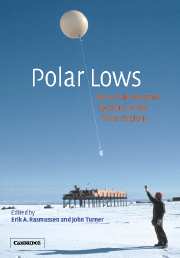References
Published online by Cambridge University Press: 07 December 2009
Information
- Type
- Chapter
- Information
- Polar LowsMesoscale Weather Systems in the Polar Regions, pp. 580 - 604Publisher: Cambridge University PressPrint publication year: 2003
